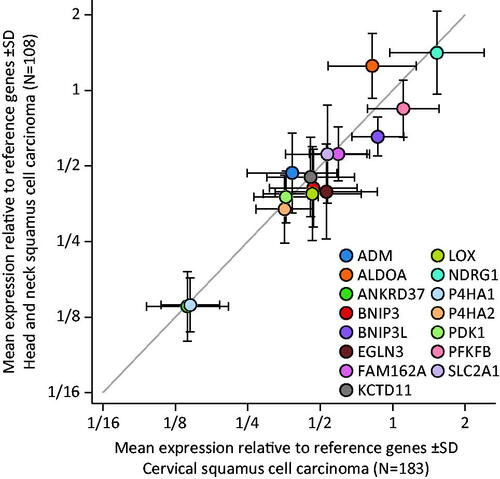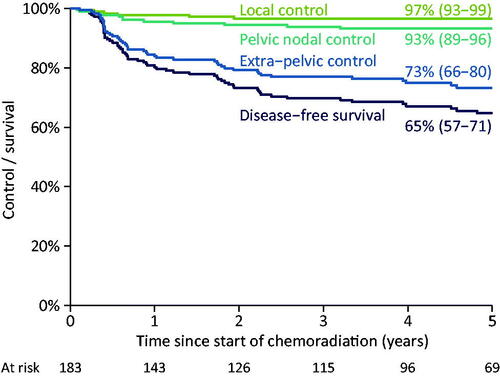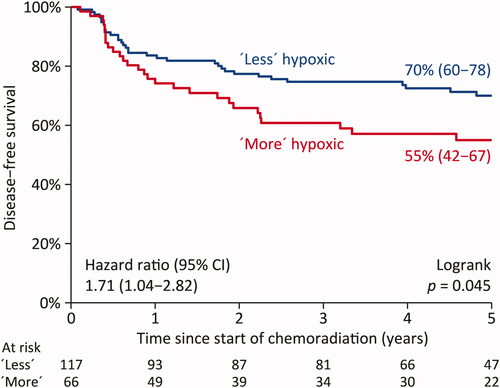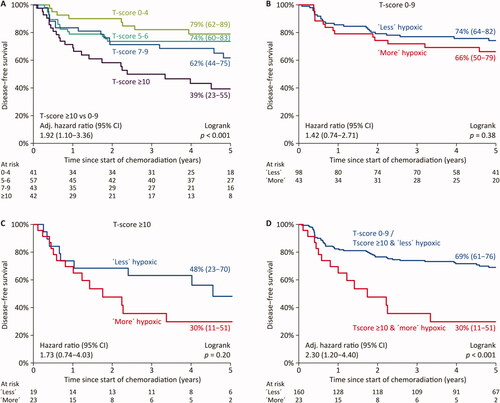Figures & data
Figure 1. Gene expression levels of hypoxia induced genes (relative to reference genes) in cervical vs head and neck squamous cell carcinoma.

Table 1. Patient and treatment characteristics.
Figure 2. Local control, pelvic nodal control, extra pelvic control, and disease-free survival in 183 consecutive patients with locally advanced cervical cancer with squamous cell histology following state of the art chemoradiation and MRI guided brachytherapy.

Figure 3. Disease-free survival in patients with locally advanced cervical cancer with squamous cell histology stratified by hypoxia status using a validated 15-hypoxic gene expression classifier.

Table 2. Uni- and multivariate Cox analysis on disease-free survival.
Supplemental Material
Download PDF (317.9 KB)Data availability statement
The data that support the findings of this study are available from the corresponding author upon reasonable request.

